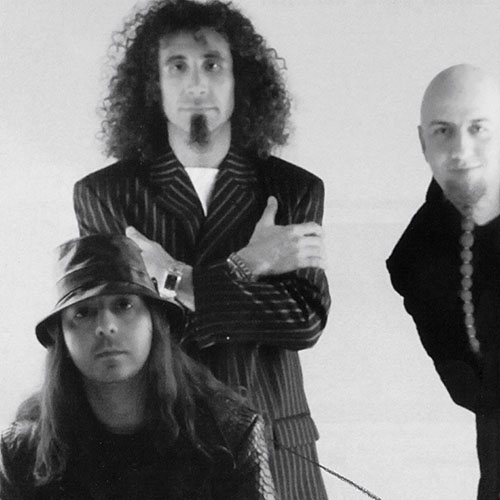In a moribund economy, many people are considering jobs they’d never thought of. But becoming a trauma-science medical-waste practitioner may not be for everyone. Taking a hands-on approach is one way to find out.
That Smell of Death
When a person is shot in the head and his or her cerebellum splatters against a bedroom wall, the brains are very hard to clean off the surface. Popcorn ceilings are the worst — matter gets stuck inside the crevices. Brains are composed of 12 percent fat (essentially, they’re cholesterol), which hardens when it dries. The brains I’m cleaning have been here just a few hours so I can only imagine the difficulty of the task if the substance had been lingering weeks.
“You have to rehydrate it,” David O’Brien explains to me and his other attentive pupils, who are dressed in matching white blood-borne-pathogen jumpsuit. “Applying a high-grade industrial disinfectant kills numerous viruses and pathogens, as well as rehydrates it for easy removal.”
For the past eight years, O’Brien has been a crime and trauma scene cleaner, decontaminating toxic locations of grisly murders, suicides, and meth labs, as well as gross-filth hoarder homes. O’Brien got the idea to venture into this industry after overhearing a friend who had worked as a body transporter at a crematorium speaking about the horrific mess that the family is left to deal with after the police, paramedics, coroner, and medical examiner leave. These days O’Brien not only does the job, but also conducts a hands-on training academy, Crime and Trauma Scene Decontamination Training Academy [site offline]. for those who want to become certified and learn the finer points of being a trauma-scene biohazardous-medical-waste practitioner.
“Someone’s got to do it,” O’Brien says offhandedly, but he takes his work seriously. He’s not a fan of the film Sunshine Cleaners, for instance. “That’s a joke,” he scoffs. “They pull a mattress out of a crime scene and trip over it.” In real life a bloody mattress is a biohazard — a pro will don protective gear and cut up the contaminated material into 12- to 14-inch squares, then layer it into a medical-waste container lined with a red biohazard bag. O’Brien stresses, “I treat everything as if it’s potentially infectious. This is not a joke; this is deadly.”
He tells me of a $40,000 gig he accepted when an unnamed Hollywood starlet passed away. The flies from the deceased’s premises ended up transmitting biohazardous contamination throughout the condo below hers — requiring decontamination of the downstairs as well. Then there was the $28,000 job in a house inhabited by an elderly lady who’d kept dozens of cats; when she was found, her felines were eating her and there was a severe case of animal defecation and urination everywhere. “It took two weeks to clean up,” O’Brien recalls. “For six years, those cats were using the whole house as a litter box. You know, I love jobs where there’s shit up to my knees; they pay the best.”
Eight of us are gathered for O’Brien’s crime-scene-cleaning class in the backyard of a house that literally smells of death, in a gated community in a Las Vegas suburb. O’Brien rents the house for the hands-on training from a woman who found his advertisement on line; she wanted the extra money to pay her mother’s medical bills. O’Brien’s crew has splattered the bedrooms and bathroom with animal blood, and littered the house with live, crawling maggots.
“Wait until you get to that famous pillow!” Tim (a former student) grins. He’s a decontamination specialist from New England. “Amber’s in there playing with the maggots.” Amber (also a former student) already has a crime-scene-cleaning business in Virginia. She’s here with some of her employees to get advanced training from O’Brien. But at the moment, all I can think about is exactly what might be in the “famous pillow.” What horrors have been concocted for us?
We suit up outside by the garage, ready to take on the faux crime scene. I zip up my white jumpsuit: size XXXXL, which adds mobility and prevents the crotch from ripping when squatting down to wipe up splattered brain matter. Sleeves are duct-taped to the wrists. Respirators are tested on each and every student to ensure that there are no air gaps, and that the student cannot smell anything at all. A triple layer of gloves is put on. (If your cell phone rings, the top glove can easily be taken off so the phone can be answered without contaminating it.) Our eight-person crew looks like a merry band of profusely sweating Stay Puft marshmallow men. We spend 20 minutes strenuously working, with a 10-minute break to avoid overheating — just as we would on a real job.
“How do you mentally prepare for a real-life crime-scene job?” I ask.
Amber answers as she emerges from behind a closed door. “Maggots do a number on me — I pretend they’re caterpillars,” she says with a charming smile. “Nothing can really mentally prepare you for the real thing. When we enter a crime/trauma scene, a majority of the time we can see visible traces of where the body was.”
Whether you’re mentally prepared or not, there’s no disguising what the work entails. “When a body expands from gases and blows up, you get all the gas, skin, hair, the matter, everywhere,” O’Brien explains. “You pull up to the house and flies are already all over your car.”
Amber talks about one job she did that “had urine bottles everywhere. The tub and toilet were filled with human waste. It was hard as a rock from sitting there for so many months. [Pause] That stuff is disgusting.”
But there are rewards: “You’re going to feel like you know these people because you’re cleaning their stuff,” Amber says, regarding cleaning up a family’s house after a murder or suicide. “They’ll thank you with tears in their eyes.”
“You find crazy stuff on suicide cleanups,” Tim adds. Which reminds O’Brien to advise the class not to wear perfume or cologne on the job so families will not associate that scent “with their l4-year-old son who blew his head off with a shotgun.”
Finally we enter the contaminated house, moving from the cold zone to the hot zone: the biohazardous bedrooms and bathroom. The strong blood stench wafts through the suburban home. With gallows humor, O’Brien proclaims, “I smell money!”
Like a pack of white Smurfs, we tromp through the place. O’Brien explains that the smell should last only for about two days or less … depending on how fast we remove the source. The homeowner takes a whiff of the horrendous odor now permeating her home. With forced optimism and a weak smile, she says, “It’s not so bad this time; there have been other classes conducted here that were a lot worse than this.”
“Fake brains are thickly splattered all over the walls and ceiling. The beds are soaked in red dry residue. Maggots squirm on the bed and floor.”
O’Brien swings open the bedroom door. Inside it looks like a Manson Family reunion. Fake brains — composed of animal tissue — are thickly splattered all over the walls and ceiling. An elaborate Jackson Pollock-style spattering of animal blood is everywhere. The beds are soaked in dry red residue. Maggots squirm on the bed and floor. The stench — murky and thick — goes straight to my watering eyes. I quickly start breathing through my mouth.
“Always be aware of your surroundings,” O’Brien commands.
“This is what it smells like after a few hours. Imagine what it smells like after a few weeks. The smell will get up into your mucous membranes and stay there for two weeks; every time you belch you will taste it,” he says. “I want you to really smell it,” he stresses.
“If anyone feels the least bit woozy — stop. I want you to take a break. No matter how gruesome this is, nothing will prepare you for the real thing.” Then, gesturing to a box in the corner: “Unhook that bag. Hold that container up.”
We uncomfortably shift our feet as the Christmas surprise is unwrapped. Inside are brown remnants of a crusty pillow — the famous pillow. This head cushion was taken from an actual crime/trauma scene, from under the cranium of a deceased prostitute who had numerous viruses.
“I want you to get familiar with the smell,” O’Brien says, as we line up to take a whiff. “It’s the smell of death and [you need to] know how to identify it.”
“Yeah, we’re good,” says one guy, quickly backing away.
The group teams up to clean the two blood- and brain-stained bedrooms and the blood-sprayed bathroom. “Cut up the mattress with a utility knife,” O’Brien says.
“Wherever you see blood, cut it out.”
The high-grade disinfectant spray — which kills every germ known to humanity — makes me sneeze inside my respirator mask. Apparently I do not have it on properly.
One of Amber’s employees looks physically distraught as he sprays the bloody walls, then makes light circular motions with a paper towel — the best technique to remove body fluids. Meanwhile, his cheery wife makes her way to the biohazard bags. “Whoops, I dropped some brains,” she says.
On day two, everyone shows up promptly at 8:45 A.M. While suiting up, O’Brien starts asking questions about the OSHA standards on touching blood-borne pathogens. He continues to question students as the carpets and padding are cut up and the walls and ceilings are decontaminated and cleaned. (Students will be required to complete a final exam that consists of 165 questions and five essay questions.)
Then, after lunch, they clean up all the equipment and the biohazard containers, and, before a lesson in odor remediation, a ladder is set in place just below the ventilation duct, and the filters are removed and disposed of before an ozone generator is set up to clean the air.
“I have every single photo of every single incident — 180 photos per scene,”
O’Brien says as I wade through maggots, the blood stench permeating my every pore and hair. “This is a good job — for the right people. There’s nothing glamorous about this; we’re not looking for fame. We’re here to help the distraught. At their worst moment in life, we are literally their knights in shining armor.”
If it weren’t for the tanking economy, it’s doubtful many of these wannabe knights would be at the training. But, as one guy from a mainstream cleaning operation in Kansas City tells me, his company chose to expand its services after being asked to clean up after a man who was gunned down at a bus stop. “We didn’t know how to do that,” he says. “That’s why we came out here. It’s a really good time to get into this business.”
Although the original company referenced in this article may have disappeared — or at least for some reason let their website fall into disrepair — as you might imagine, these days one can find dozens more. Should you have a benevolent (or, y’know, gory) bent, and you feel a little bored, feel free to check out Crime Scene Clean Up Schools. Should you have a more cut-to-the-chase (as it were) approach to your career, Learn.org always proves a valuable resource. … For most of us, though, we really have a rather simple response: EEEW.
























